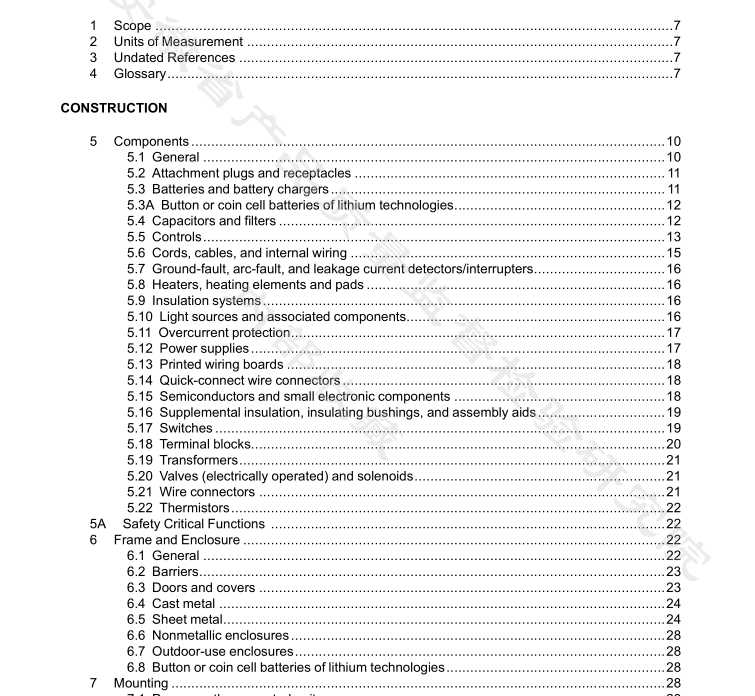UL 1951:2011 free download STANDARD FOR SAFETY Electric Plumbing Accessories
1.1 These requirements cover equipment connected to or used with plumbing in commercial or household locations. Examples of equipment covered by these requirements are irrigation equipment, sprinkler controls, pedicure spas, water controls located in kitchens and bathrooms, electric faucets, toilets and toilet flushing systems. All equipment is intended for installation and use in accordance with the National Electrical Code, NFPA 70, and is rated 600 volts or less.
1.2 These requirements do not cover pumps, dishwashers, washing machines, or other equipment connected to plumbing that is covered by individual requirements.
1.3 These requirements do not cover refrigeration systems or controls that regulate water temperature, or equipment for use in hazardous locations as defined in the National Electrical Code, NFPA 70. 2 Units of Measurement
2.1 Values stated without parentheses are the requirement. Values in parentheses are explanatory or approximate information.
2.2 Unless indicated otherwise, all voltage and current values are rms and wattage values are average power.
3 Undated References
3.1 Any undated reference to a code or standard appearing in the requirements of this standard shall be interpreted as referring to the latest edition of that code or standard.
4 Glossary
4.1 For the purpose of this standard the following definitions apply.
4.2 FIELD-WIRING TERMINAL – A terminal to which power supply (including equipment grounding) or control connection will be made in the field when the product is installed as intended. If the wire, to be connected to the terminal, is provided as part of the unit and a pressure terminal, connector, soldering lug, soldered loop, crimped eyelet, or other means for making the connection is factory-assembled to the wire, it is not a field wiring terminal.
4.2.1 CAPACITOR, CLASS X – Capacitor or RC unit of a type suitable for use in situations where failure of the capacitor or RC unit would not lead to danger of electrical shock but could result in a risk of fire. Examples would be units connected phase to phase or phase to neutral.
4.2.2 CAPACITOR, CLASS Y – Capacitor or RC unit of a type suitable for use in situations where failure of the capacitor could lead to danger of electric shock. Examples would be capacitors connected across the primary and secondary circuits where electrical isolation is required to prevent an electric shock or between hazardous live parts and accessible parts.
4.3 CONTROLS, AUTOMATIC ACTION – A device in which the transmission and operation of at least one function are produced by initiation which is not the result of manual actuation.
UL 1951:2011 free download
